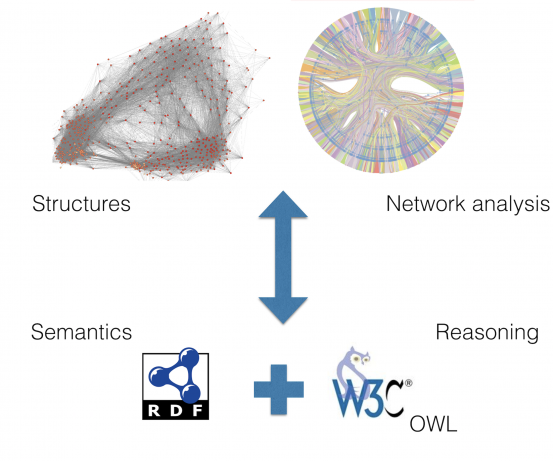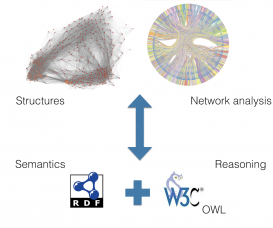Network analysis is used by a variety of fields in the sciences and the humanities. Social network analysis, for example, has become deeply integrated into quantitative social science. The budding field of historical network analysis applies methods developed in these fields to historical questions. In this respect, Department I is addressing questions ranging from the development of trade networks in antiquity to the formations of research fields in the post-war era.
Customarily seen as separate from developments in network analysis, semantic modeling for the description of data and its structures has become an increasingly popular way of combining heterogeneous data in a semantically meaningful way. The outcome of such modeling processes is an interlinked network of distributed resources, which can be queried and to which computational methods such as interference or coherence checks can be applied. In the literature, these structures are now commonly described as knowledge graphs.

Integrating semantic modeling, network and graph theory.
Both approaches result in the description and analysis of networks—one focusing on dynamic changes and their driving forces, the other on the semantics of the network. Department I has now begun to utilize the combination of both approaches to reach a better understanding of the development of knowledge.
Network analysis is increasingly used as a methodology for understanding historical processes. Network theory can serve as a tool to systematically describe the structure and evolution of knowledge systems—to reconstruct, document, and explain the way in which knowledge systems emerged, persisted, transformed, and eventually disappeared. In adopting network analysis for historical research, the challenge lies in the fact that it often renders the social and material aspects fuzzier, less precise, and more ambiguous.
In line with the basic concepts of historical epistemology for describing knowledge structures, the project investigates three types of networks: semantic networks, semiotic networks of external material representations of knowledge, and social networks of actors. These networks correspond with knowledge structures that are understood as codified experiences and potentials for action: cognitive structures, external representation, and social structures.

